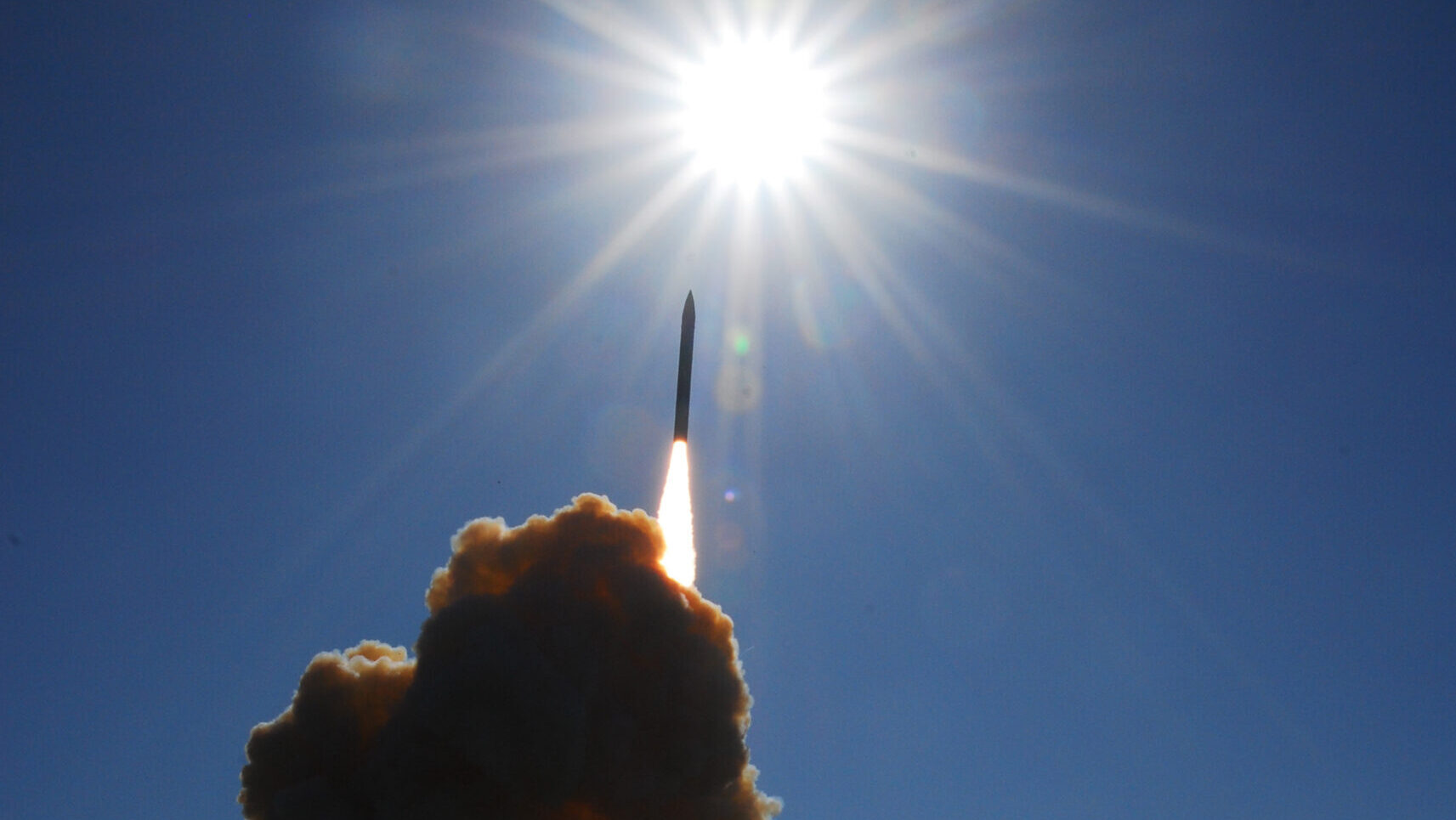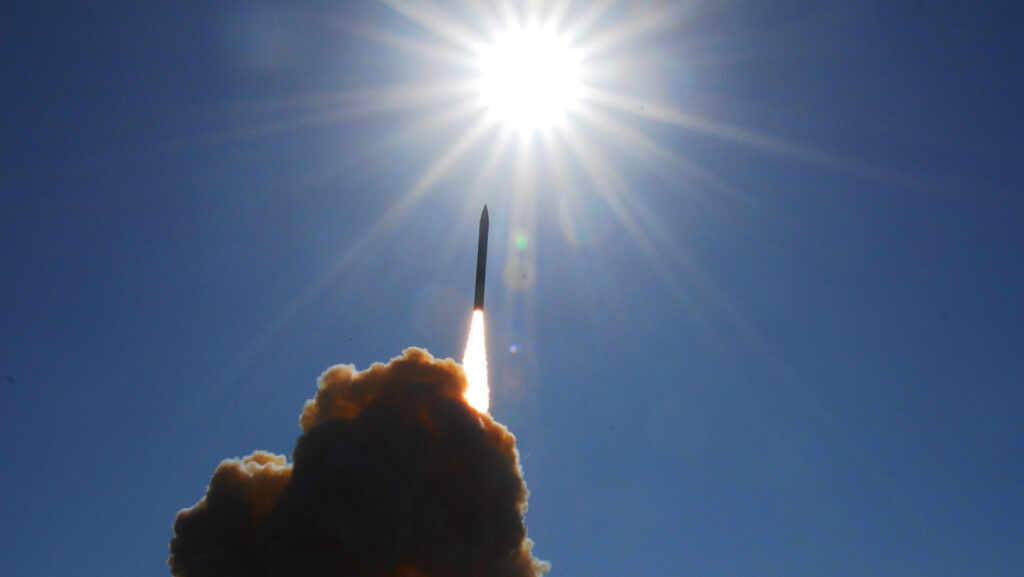
A ground-based interceptor is launched from Vandenberg Air Force Base, California, toward a ballistic missile target launched from Alaska during a test Dec. 5, 2008. (Photo courtesy of the Missile Defense Agency)
WASHINGTON — Defense Secretary Pete Hegseth has drafted an all-hands-on-deck memo for crafting an action plan to deploy a comprehensive missile shield over the United States, including readying a budget request for fiscal 2026, Breaking Defense has learned.
The undated, unsigned “strategic guidance,” obtained by Breaking Defense, lays out a two-phase process — led by the undersecretary for policy and supported by the assistant secretary for space policy — for meeting the 60-day deadline set by President Donald Trump in his Jan. 27 “Iron Dome for America” executive order. That deadline requires a DoD action plan to substantiate a “next-generation missile shield … against ballistic, hypersonic, advanced cruise missiles, and other next-generation aerial attacks from peer, near-peer, and rogue adversaries.”
Former Heritage Foundation adviser Alexander Velez-Green is currently “performing the duties” of the USD-policy role while Elbridge Colby awaits confirmation. John Hill, who served in the space policy office both under the first Trump administration and the Biden administration, is now performing the duties of assistant secretary for space policy.
The memo is a draft, and things can change quickly in the Pentagon. But even if details change before a final memo goes out, the draft provides a preview of who will likely be the drivers on what could be Trump’s signature national defense project.
When OSD was asked for comment on the memo and when Hegseth may sign it, a defense official said: “We don’t have anything to announce at this time.”
As a first step, by Feb. 28 the chairman of the Joint Chiefs of Staff, DoD components, military departments, combatant commands and the Missile Defense Agency (MDA) are to put together three “scalable reference architectures” for “small, medium and large options” for the shield using “kinetic and non-kinetic” weapon systems. Estimated costs are to be provided for each option.
Plans for specific elements to be included in each of those options are tasked to interagency working groups.
Work on a plan to “accelerate a Hypersonic and Ballistic Tracking Space Sensor Layer” is tasked to Chief of Space Operations Gen. Chance Saltzman, “in coordination” with the DoD policy shop, Cost Assessment and Program Office (CAPE), and Office of Acquisition & Sustainment, as well as the MDA director.
Saltzman also is to submit a plan for the custody layer of the Space Development Agency’s Proliferated Warfighter Space Architecture. The custody layer is being designed to maintain “weapons quality tracks for time-critical targets, coupled with low-latency space data transport” to “enable the creation of a targeting solution from the sensor to the warfighter in operationally relevant timelines,” according to the agency’s website.
The DoD undersecretary for Research & Engineering is to coordinate with DoD Policy, the chairman of the Joint Chiefs, the Space Force and the DoD undersecretary for Intelligence and Security to craft a plan for a large constellation of kinetic and non-kinetic space-based interceptors, including for boost-phase intercept shortly after a missile launches. The Research & Engineering office also is develop an “assessment” of the potential for directed-energy weapons as part of the architecture and funding options for doing so.
The MDA director — in coordination with the secretaries of the Army and Navy, the Joint Chiefs chairman, and the commanders of US Northern Command and US Strategic Command — is responsible for planning “underlayer” and terminal-phases capabilities to “defeat a countervalue attack.”
Under the second phase of Hegseth’s draft Iron Dome action plan, with results due in mid-March, tasking orders are laid out for:
- a “review of relevant authorities” needed to speed deployment of the missile shield architecture;
- a plan to fund the chosen reference architecture option, “allowing sufficient time for consideration” by the president before the fiscal 2026 budget is finalized;
- development of a set of “prioritized locations” for “defense against a countervalue attack” by nuclear adversaries, while at the same time “guaranteeing” the US ability for a second-strike as well as defending critical defense and civilian infrastructure; and
- an assessment of the impact of Trump’s executive order on strategic stability.
Lastly, DoD and the State Department are tasked to complete an allied and theater missile defense review by May 15.
Ashley Roque contributed to this story.








